[Click on any photo to enlarge it]
Day One - Beijing 
Tiananmen Square, the Forbidden City, the Hutong, the Temple of Heaven, Peking Opera
Our tour guide, Zhang Lu, or Mark as he told us to call him, had
told us that we should meet in the lobby at 8:30 A.M.
- sharp! No one could be late. So we had to get up by 6:45 in
order to get breakfast. The breakfast was a large buffet with lots
of Chinese dishes, eggs cooked to order, many breads, toast, lots
of fruits and on and on. Very nice.
I got Reuben on the bus and the wheelchair stowed underneath and
had to run back to the room to get his cane. I was worried about
being late so I was moving rather fast. Coming out of the hotel
there was a small 3-inch step. I never saw it. I twisted my ankle and
fell flat on my face. But I was up again just as fast, feeling very
embarrassed. I wasn't too worried because I know that walking on it
will work through it and I suspected we had a lot of walking ahead.
Little did I know!

Our first stop was Tiananmen Square. It's a huge open area surrounded
by many official buildings. With an area of 109 acres, Tiananmen
Square is one of the largest city squares in the world. At the south
end is the
Monument to the People's Heroes and the
Mao Zedong Mausoleum. This is where we began our tour.
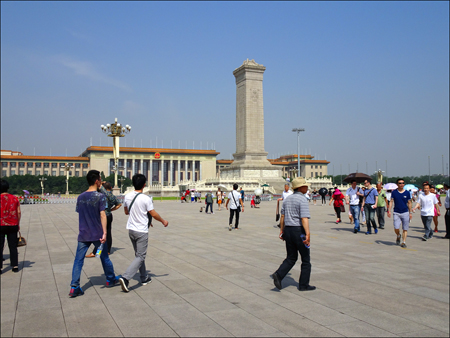
In front of the Mausoleum there is a monument of soldiers.
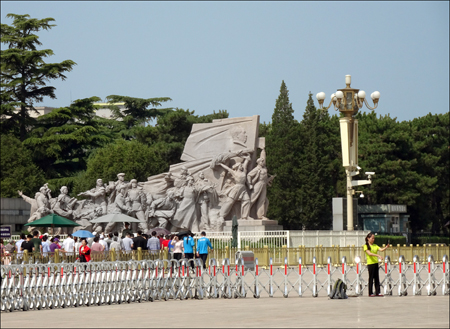
As we walked toward the Forbidden City we had the
Great Hall of the People on our left,
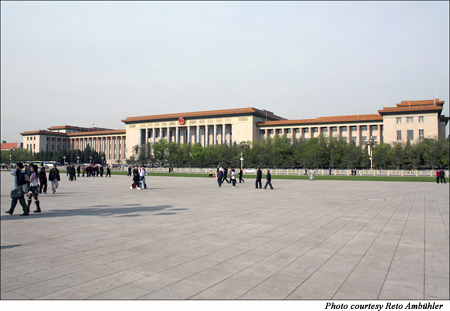
and the
National Museum of China on our right.
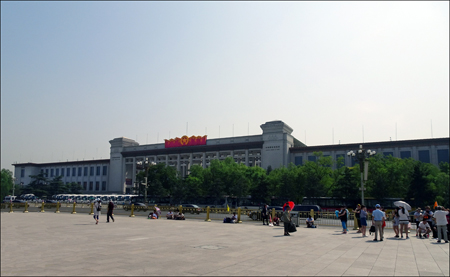
You could probably spend an entire week just exploring this one
area. I would have loved to have gone to the National Museum of
China, but there was no time. I pushed that wheelchair from one
end to the other. Occasionally you would see groups of police
officers marching through.

There were beautiful flowers all around the square.
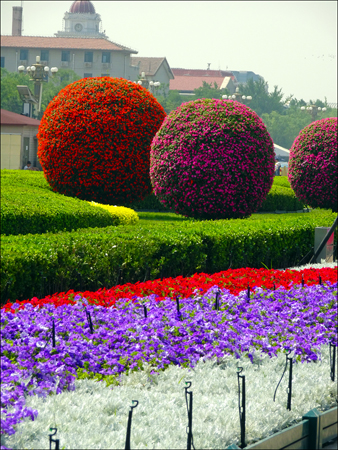
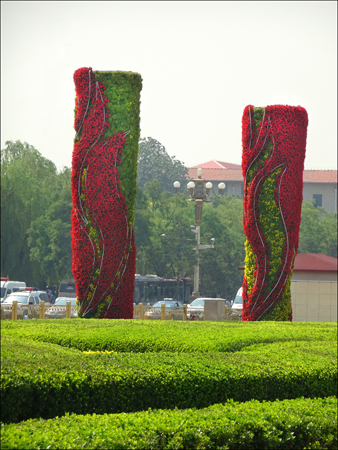
We finally reached the
Tiananmen
Gate (literally the Gate of Heavenly Peace) at the north end.
This is the famous building with the image of Mao Zedong on the front.
In front of this building is a stone column with carvings of dragons.
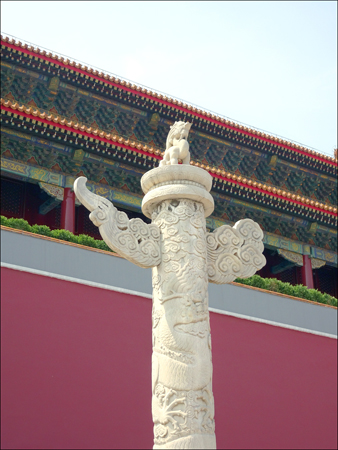
This is where we stopped to have a photo made of our group, with
our tour guide, Zhang Lu.
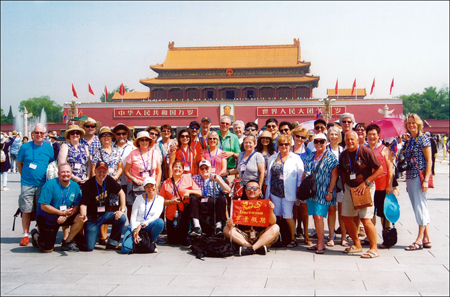
Click here for Postcards of Tiananmen Square

As a group, we entered through the Gate of Heavenly Peace and had
our first look at the Forbidden City. Reuben had to get out of the
wheelchair and climb the stairs to get through the gate. This was
to be done many times throughout this place, and indeed on the rest
of our trip.

The Forbidden City was built between 1406-1420, during the Ming
Dynasty. The construction was ordered by the powerful Yongle Emperor,
and more than a million people worked on the construction. Within
its walls are 980 buildings, 90 of which are palaces. There are at
least 8,700 rooms, but it has been said that there are 9,999 rooms
because 10,000 rooms would be reserved for heaven alone. The total
floor space is over 1,600,000 square feet. It is said that if the
Emperor slept in a different room every night of his life, that he
would be over twenty-four and one-half years old before he could
sleep in the same room twice!
The main buildings are all aligned in a straight line from north
to south, following many ancient Chinese rules of design showing
symbolism and philosophy. Having the buildings all face to the
south symbolizes holiness; facing away from the north which
represents China's enemies, cold winds and evil. The five elemental
colors - white, black, red, yellow and green - are used all
throughout the palace. Yellow is the exclusive color of the
emperor and symbolizes his ultimate power. No ordinary mortal was
allowed to use the color yellow on the pain of death. This color
was used for all the roofs of the buildings, except for the
library which had a black roof. This was to represent water in
order to protect the writings from fire. The number three
represents heaven. The numbers 5 and 9 represent the majesty of
the emperor. You will see groupings of these numbers throughout
the Forbidden City.
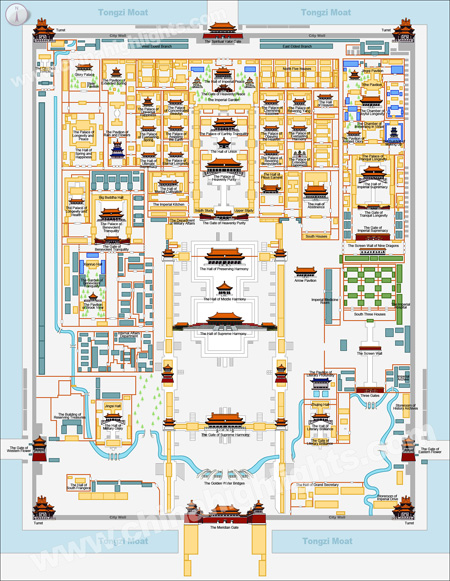
The Forbidden City was home to both the Ming and Qing Dynasties.
Over the course of 500 years there were 24 emperors who lived in
the palaces. Puyi, the last emperor of China, abdicated the throne
in 1912. He continued to live in the Forbidden City for another 12
years. After that time it became the Palace Museum and was opened
to the public.
After entering the south gate, we walked to the north gate where
the bus was to pick us up again. That is just about one mile. We
had a little time to explore some of the areas on either side,
but not a lot. Most of the Forbidden City is paved with large
cobblestones. They were not difficult to walk on, but certainly
difficult to push a wheelchair across. And there were many places
where we had to stop, walk up or down stairs, then set up the
wheelchair again and carry on. It didn't leave much time for us
to explore the other areas. That was a very long mile.
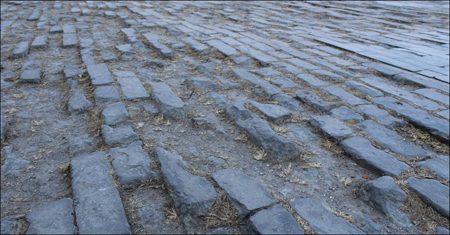

Reuben and I both found the Forbidden City beautiful and intriguing.
It would have been nice to have had time to see more of it,
but that would have taken at least the better part of a day.
We didn't have that kind of time.
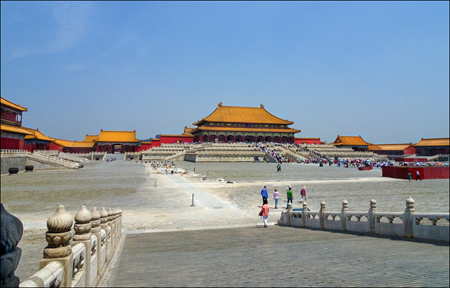
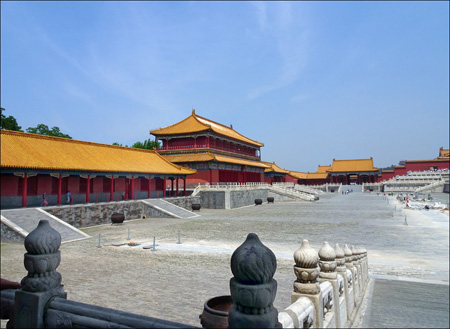
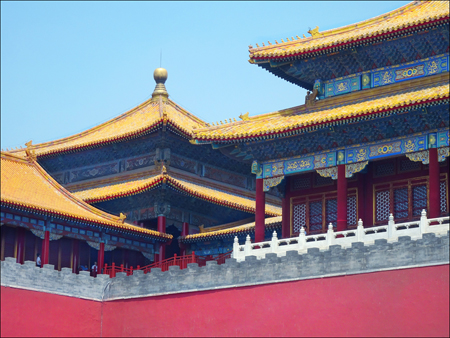
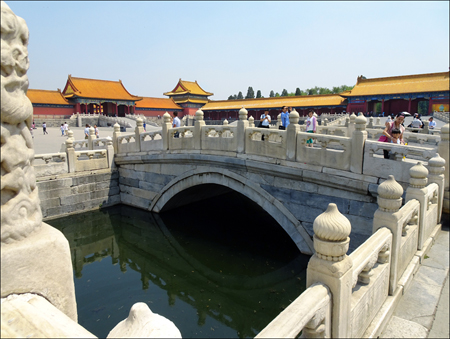
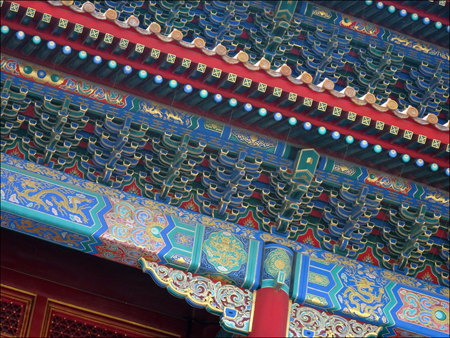
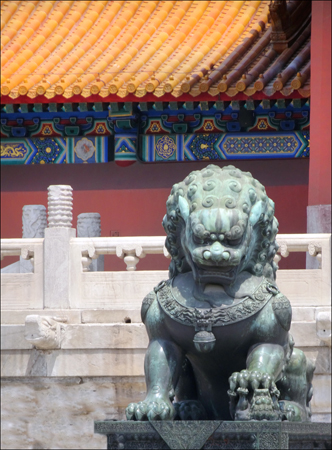

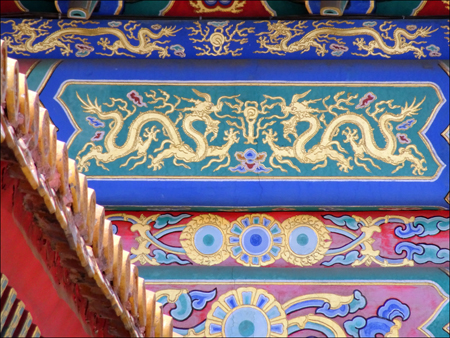
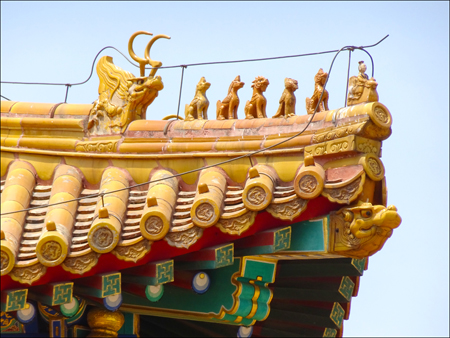
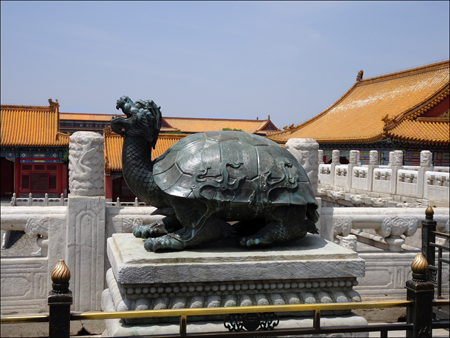

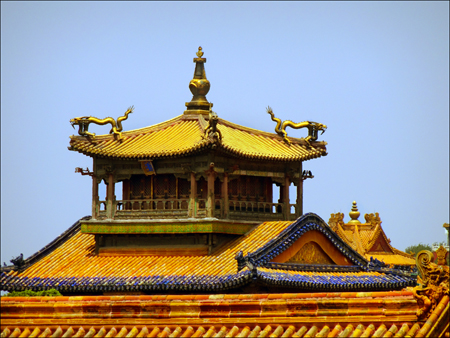
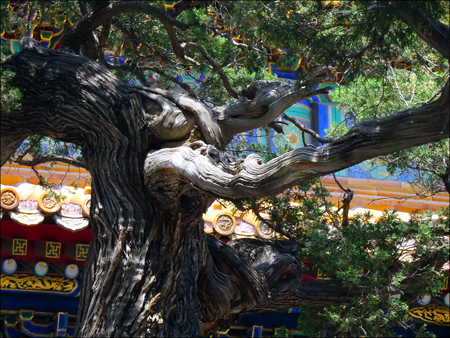
As a little aside here, bathroom facilities in China are a bit
difficult sometimes. We had been told to bring toilet paper. In
many places, this is true. However, most places have one large
roll of toilet paper near the front door when you come in and
you take some from there into the stall. And, for us ladies,
most of the toilets are eastern-style, meaning they're at floor
level! Squatting is a must. However, some places do have western
toilets like we're accustomed to. And the Forbidden City's
toilets are highly rated!
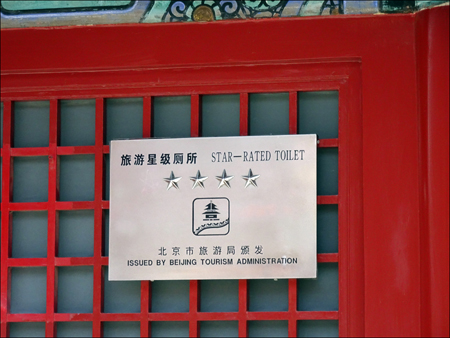
This tour was designed to introduce us to many parts of China.
And by now it was almost 2 P.M. and way past lunch
time. So we boarded the bus and headed to The Hutong.
Click here for Postcards of The Forbidden City

The Hutong is the old section of Beijing. The word derives from the
Mongolian “hottog” which meant “water well.”
Centuries ago the villagers would dig a well and then build homes
around it forming a courtyard. The word “hutong” today
means ‘alley’ and refers to the tiny streets separating
these various courtyard-centered compounds. The alleys are very narrow,
most are around 9 metres, but sometimes an alley will be no wider
than 3 or 4 metres, and some are so narrow that even a compact
motorised vehicle cannot pass through them!
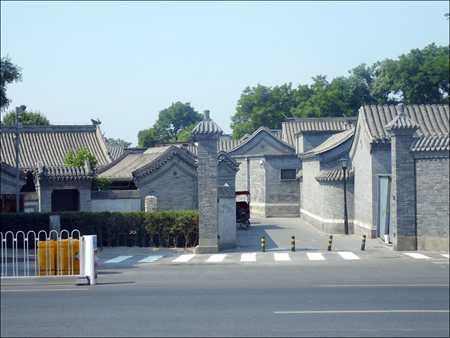
Beijing was redesigned 800 years ago after Genghis Khan had reduced
it all to rubble. These narrow alleys crisscrossed the city. By the
Qing Dynasty
(1644-1912) there were as many as 2,000 Hutong. By the mid-1900's
there were more than 3,000. However, with all of the modern development
in Beijing, most of the Hutong are being replaced with modern buildings.
One of the oldest neighborhoods, Sanmiao Jie - over 900 years old,
which predates the Mongolian Hutong design - was demolished in 2009.
Our tour company arranged for us to tour some of the Hutong. Because
of the small roads our bus could not take us there. So we all had
to disembark and hire rickshaws. The rickshaws of today are bicycle
powered and seat 2 passengers.

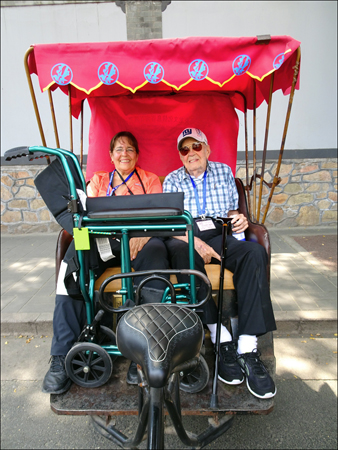
We rode for about 15 minutes through some of the old neighborhoods.
There were many little shops that looked interesting. We also
passed by Qianhai Lake.




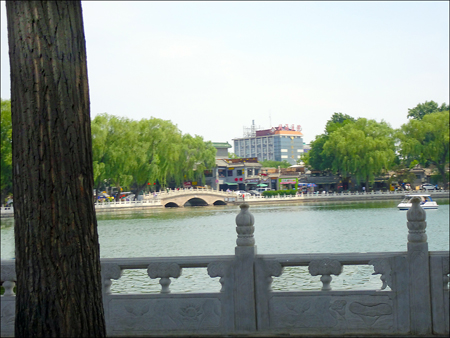
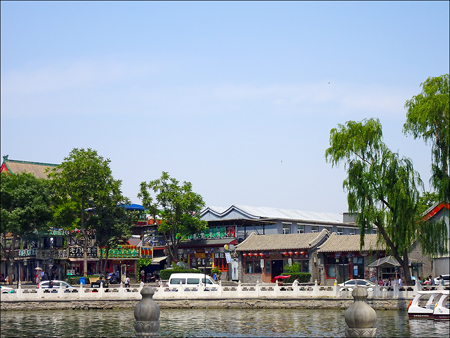
After a lovely drive through many Hutongs, we were taken into the
home of someone who prepared a traditional lunch for us. We didn't
know it at the time, but this turned out to be one of our most
memorable meals. There were many courses, but here is how it began:
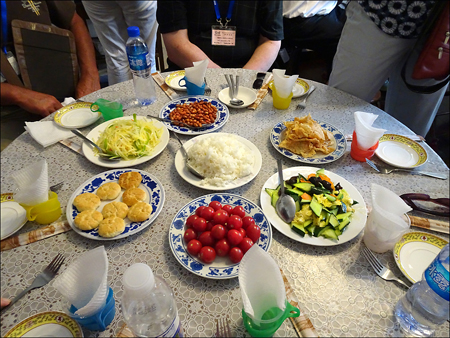
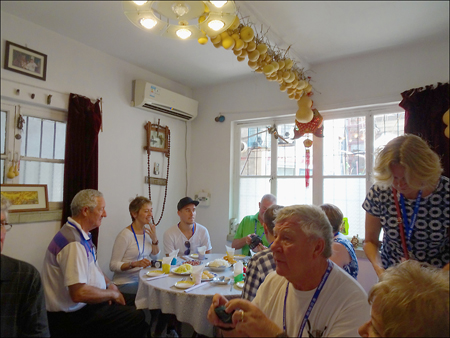
After the lovely meal it was time to leave. But we needed to make
a pit stop first. Remember what I said about the toilets? This
was our only choice.
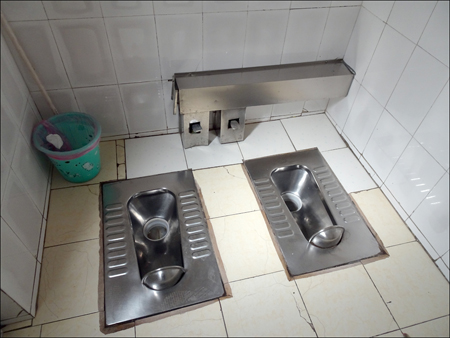
Reading (and writing) all of this feels like I've been in China
at least a week. Remember, this is still Day One - and there's
so very much more to come!
Click here for Postcards of The Hutong

The Temple of Heaven was built by the Yongle Emperor from 1406 to
1420. This is the same man who ordered the building of the Forbidden
City and it was built during the same time. It sits on 660 acres
of land and is four times larger than the Forbidden City. Surrounding
the main buildings are many parks.

Outside of the east gate there are seven large stones called
Qixingshi. They are supposed to represent the seven peaks of
Taishan Mountain which was a place of Heaven worship in classical
China.
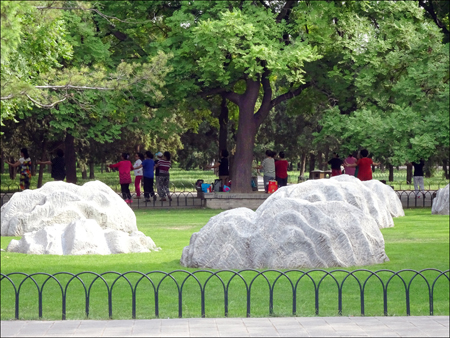
The most famous building is the imposing round building known as
the Hall of Prayer for Good Harvests. This building has become a
symbol of Beijing. Its location was determined by the Emperor's
Fengshui master as the exact point where Heaven and Earth meet.
As with the Forbidden City, the wooden pillars supporting the
roof are joined without using any nails or cement.
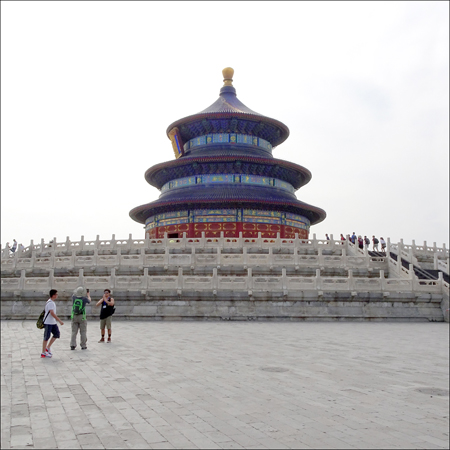
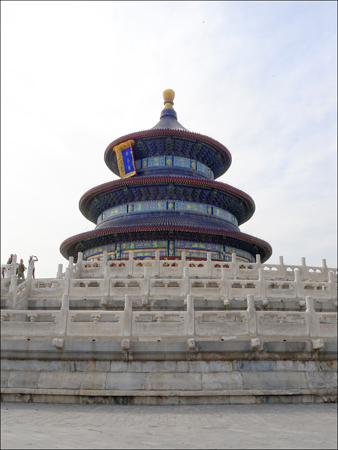
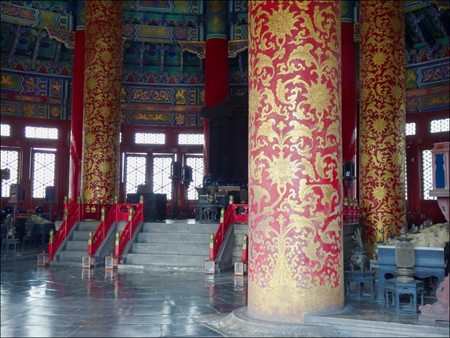
Opposite this building to the south is the Imperial Vault of Heaven,
another round structure. It is similar to the Hall of Prayer for
Good Harvests but much smaller, having only one gable of eaves and
a single tier marble base. This building was originally built in
1530 during the reign of Jiajing Emperor (Ming Dynasty).
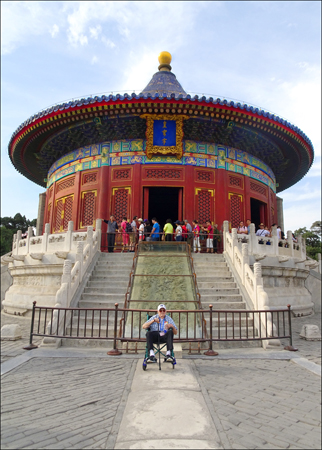
Surrounding this building is the Echo Wall. A whisper spoken at one
side can be clearly heard all the way on the other side, and there
are stones within the courtyard that return various numbers of echos.
Of course you must be there before the throngs of people in order
to hear them. We didn't get that chance.
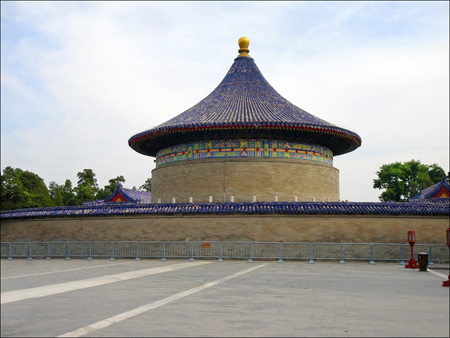
At the southern end of the park is the Altar to Heaven, or Circular
Mound. This consists of an empty three-tiered plinth made of marble
that rises 5 metres. It is used to worship heaven at the winter
solstice.
In between the Imperial Vault and the Hall of Prayer for Good
Harvest is the DanBi Qiao (Vermillion Steps Bridge). This pathway
is 360 metres long and is 1 metre high at its beginning and 4
metres high at the end. In walking this path one ascends almost
imperceptibly to signify the progression from Earth to Heaven.
Along the path are many centuries'-old cypress trees - some more
than 500 years old. It is believed that these very ancient trees
have the power to absorb negative forces and transform them into
good energy. So we were told to stand near the tree and hold our
arms out toward the tree, palms facing the tree. This way you can
absorb the good ‘Qi’ from the tree.
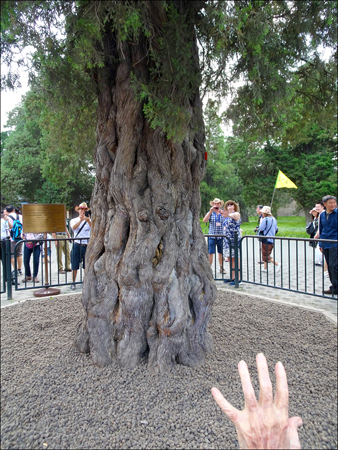
The Temple of Heaven is a lovely place. It has areas of smooth
pavement, but many places are still rather rough. There were also
many areas where Reuben would have to get out of the wheelchair
and walk up several steps. However, most of the pavement wasn't
so bad. Again, we went from one end of the monument all the way
to the other. Toward the end we approached the ancient cypress
trees. It felt very nice to stand by the oldest tree with all of
us holding our hands out. It was a lovely way to end our visit here.
Here are some more photos from around the Temple of Heaven:

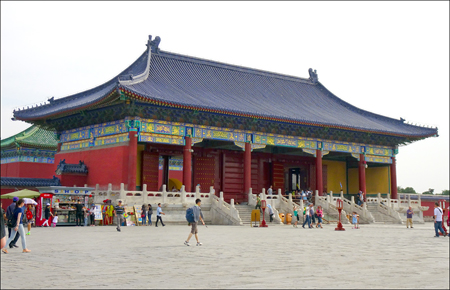
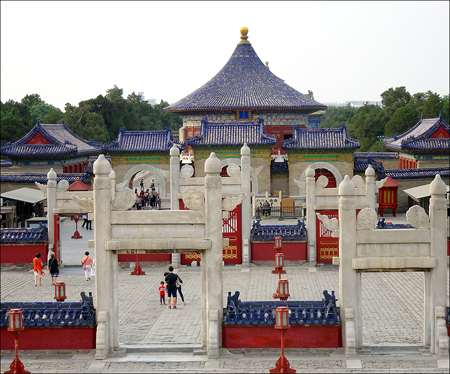
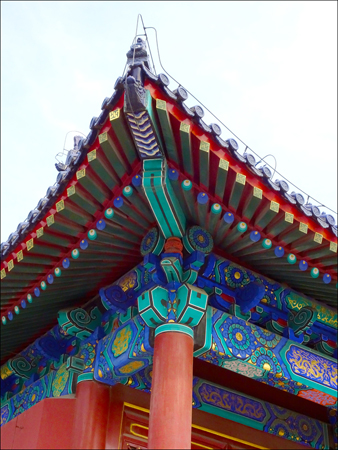

Click here for Postcards of The Temple of Heaven

After leaving the Temple of Heaven we went to dinner, then on to
the Peking Opera. It is totally different from operas that I'm
accustomed to working in the theatre. As the audience is coming
in and finding their seats, one of the actors was on stage applying
his very intricate makeup so the audience could see the transformation.
Fascinating.
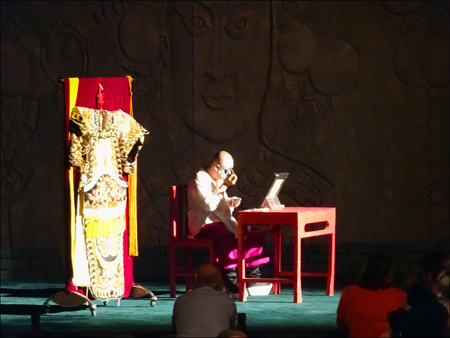

The accompaniment is from a small ensemble that uses traditional
Chinese instruments. The sound can be harsh and shrill at first,
but as you get more accustomed to it, the sound was quite lovely.
Rather than one long story, there were several short stories.
Fortunately for us there were screens on either side with English
translations. Very nice.
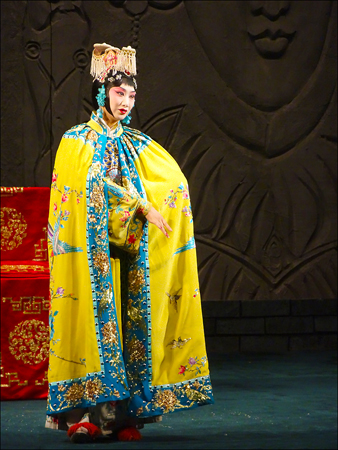
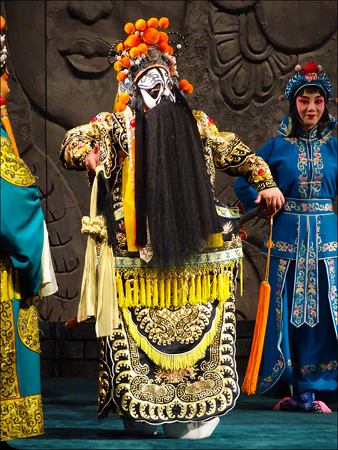

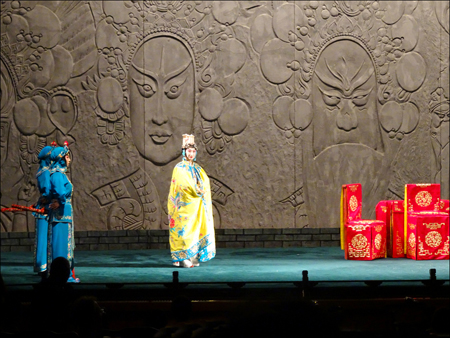

|


